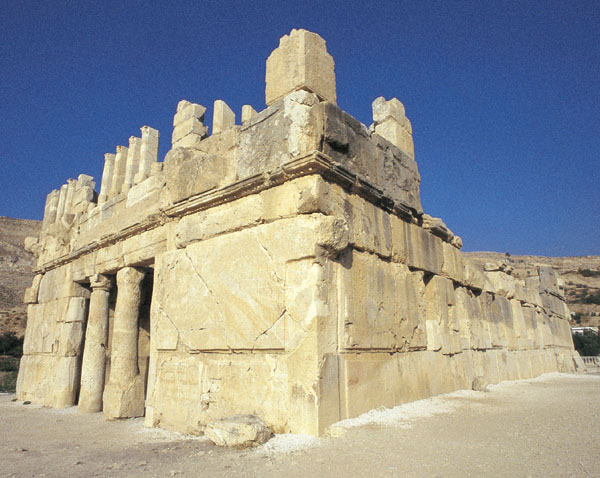Image Details

Garo Nalbandian
According to Josephus, Hyrcanus built a “wide and deep moat” around his “fortress” for protection. Hyrcanus had sided with the Ptolemaic kings in their struggle against the Seleucid kings of Syria and Mesopotamia for control over the southern Levant. In about 175 B.C.E., after the Seleucids gained control over this region, Hyrcanus took his own life, leaving the building unfinished.
Author Ehud Netzer suggests a different explanation: Qasr el-Abd was not a fortress but a pleasure palace for entertaining guests. And the large pool was not a moat but a reflecting pool; from the shore and from boats, guests would have seen the graceful building and its elegant carvings shimmering in the water.
